How to play the James Bond guitar chord – and 007 ways you can solo over it
To celebrate the release of James Bond's 25th outing, No Time To Die, we show you how to play its iconic theme chord, and give you a license to thrill with your own accompanying leads
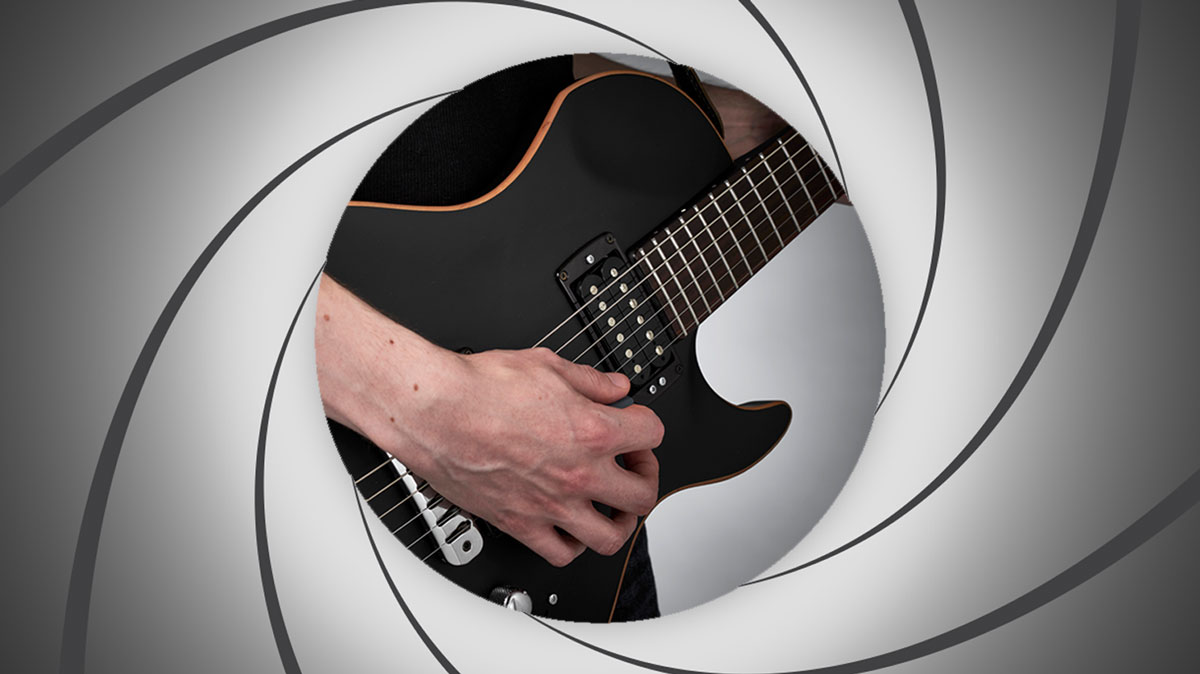
The iconic 'James Bond chord' was first featured in the very first Bond movie, Dr. No, and performed by guitarist Vic Flick.
Its technical name is EmMaj9 – an E minor with a major 7 and a 9th added – and learning how to play the James Bond chord on guitar is a rite of passage for just about every player.
As you can see from the diagram below, fretting the chord involves a pleasingly diagonal shape at the 7th position, leaving the low E string open. You can add the open high E if you wish, although it doesn't appear on the original recording.
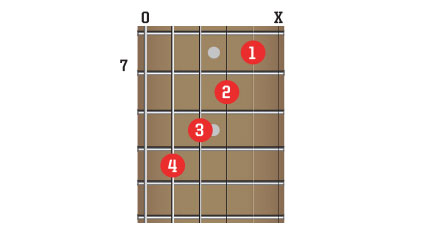
How to solo over the James Bond chord
Something fewer guitarists may have attempted, however, is soloing on top of the iconic voicing – here, we're going to tackle a mission worthy of 007 himself and examine the options for improvising over the James Bond chord.
Looking at the notes in the chord, E minor pentatonic is clearly not going to work, as it has a D natural where this chord has a major 7th (D#), which does not appear in the scale.
The obvious choices for a seven-note scale would be E melodic minor or E harmonic minor – the difference between the two being the 6th, which is a b6 in harmonic minor.
However, as we've been dealing with pentatonic scales so far, let's see if we can exploit some five-note scale options.
The minor 6 pentatonic (R-b3-4-5-6) substitutes the b7 of the minor pentatonic for a major 6th. Robben Ford is known for exploiting the major 6th over minor or blues harmony. This scale doesn't include the major 7th (D#) so it's not as detailed a harmonic statement.
Next we'll use a B dominant 7th pentatonic (B-D#-E-F#-A) for a Jeff Beck inflection. The notation shows the degrees created when we superimpose this over the Emmaj9.
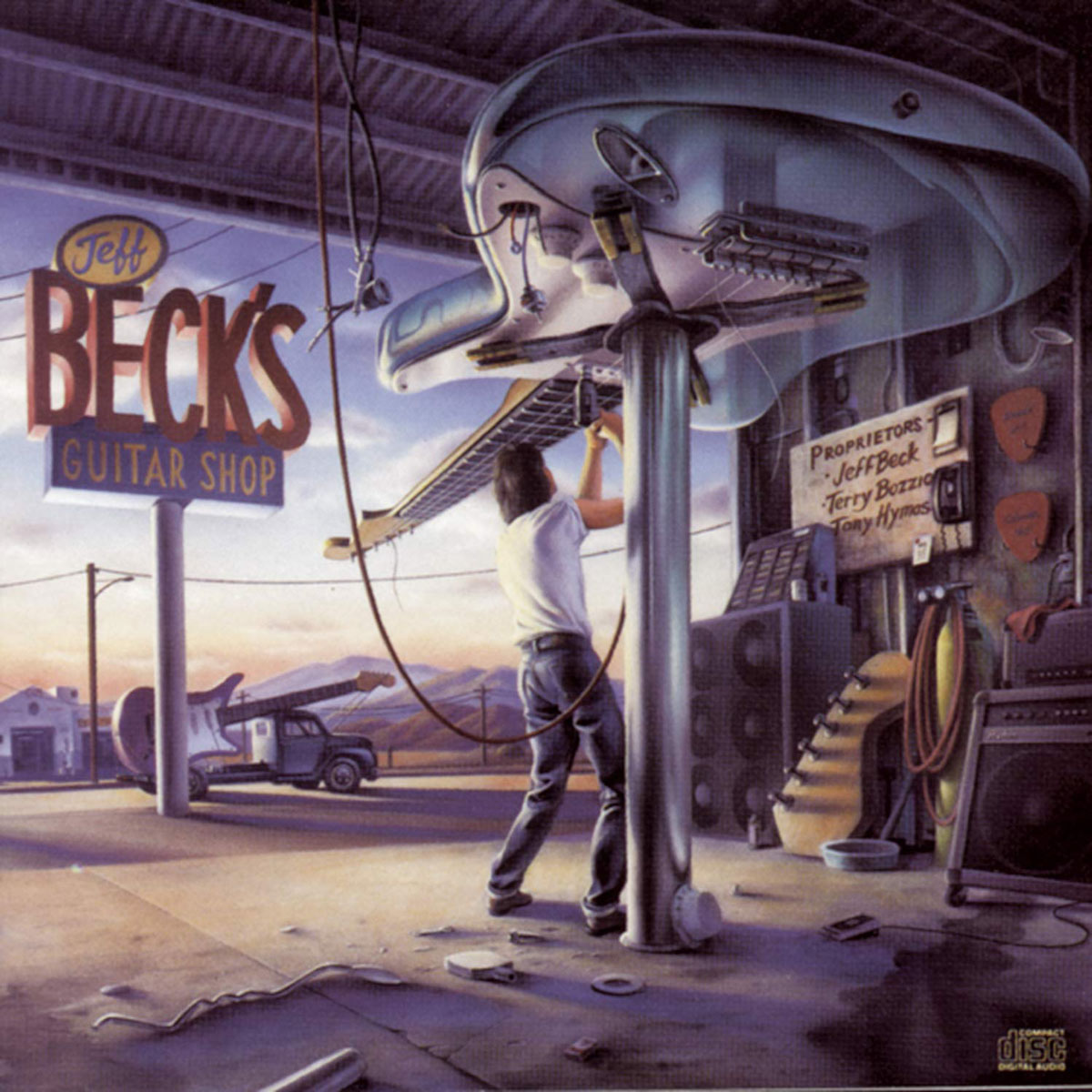
Although guitarists don’t tend to solo over the mmaj9 chord, players ranging from Scott Henderson to Steve Lukather have done. Listen to Robben Ford on Mystic Mile, Truth, and Talk To Your Daughter for the Minor 6 Pentatonic, and Jeff Beck’s Guitar Shop, Who Else! and Blow By Blow for the Dominant 7th Pentatonic.
Out of interest, if you use this over a B7 chord, it starts to sound like Indian music – this is more of a Jeff Beck sound than in our example here.
Our final choice is a personal favorite of mine – B major b6 pentatonic (B-D#-E-F#-G), which is like B major pentatonic but with a b6th. This is a very powerful pentatonic – partly because of the wide interval between the G and B notes – a whole major 3rd.
Because of this wide interval, I chose to show a simple scale pattern applied to this scale. It's worth really experimenting with the various pentatonic scales by trying to apply the kind of patterns one would use with a seven-note scale to these five-note options.
Simply playing ascending 3rds or triads results in much more varied patterns when we are addressing pentatonic scales, an approach favored by more thoughtful players.
Robben Ford plays some really interesting pentatonic lines that defy the usual Saturday afternoon music store patterns. Check out his Mystic Mile album for inspiration – it's full of great, less obvious pentatonic ideas.
In our audio examples, you'll hear a reference James Bond chord played on guitar before examples 002 to – yes – 007 over the count-in.
In terms of the sound you're looking for, tune in a pleasing tone such as a clean or very slightly driving neck pickup selection, with enough light echo or reverb to make your new licks sound sweet.
Example 001. James Bond chord

Here’s the famous chord voicing. 1B/1C shows the melodic and harmonic minor scales. melodic minor has a major 6th, harmonic has a b6th for a darker character.
Example 002. Melodic minor

Here, E melodic minor (E-F#-G-A-B-C#-D#) is used to create a flowing line. We’re emphasizing the major 7th to highlight the chord’s sound.
Example 003. Harmonic minor

Using the harmonic minor scale we’re weaving a line around the chord tones. The 3rds idea in the second half of bar 1 is often used in blues and jazz.
Example 004. E minor 6 pentatonic
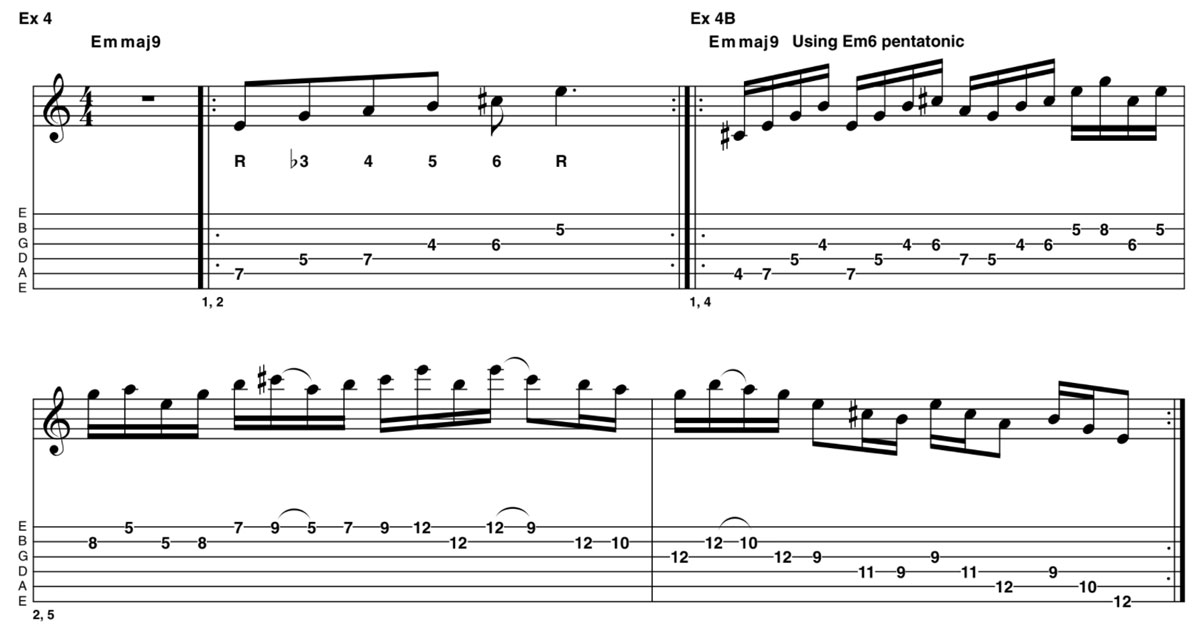
This lick uses the scale to generate wider leaps for added interest. Even without the Major 7th, there’s still some of the brightness of the melodic minor
Example 005. Dominant 7th pentatonic
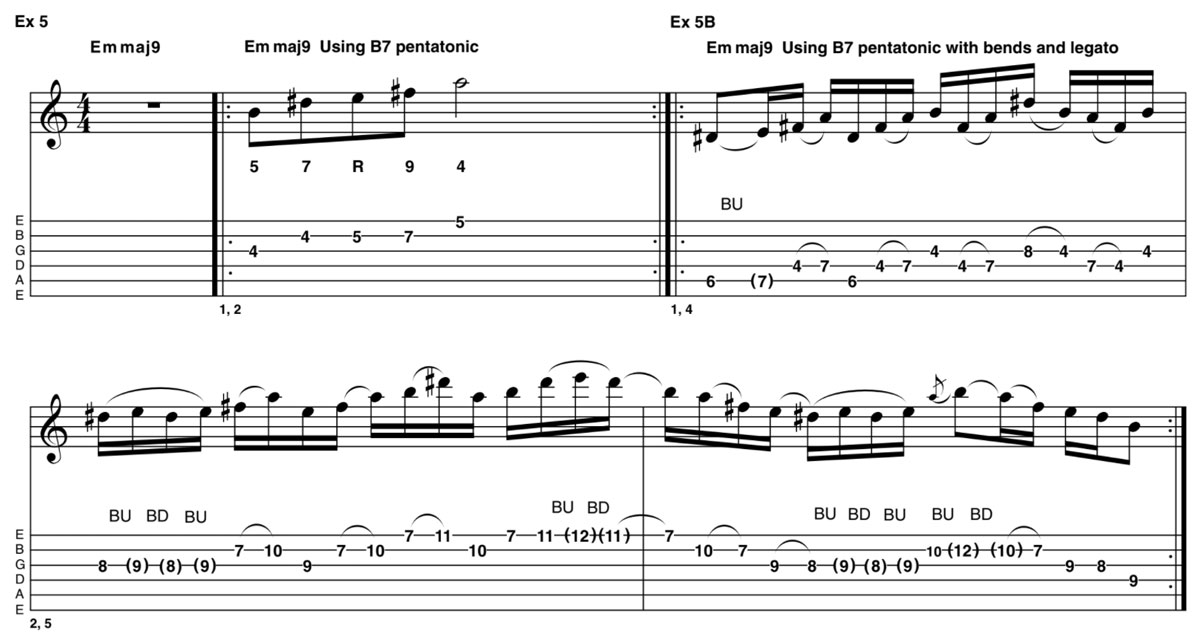
Here’s B dominant 7th pentatonic, with the intervals under the scale representing how they relate to the Emmaj9 chord. Try this with reverb and overdrive.
Example 006. Major flat 6 pentatonic
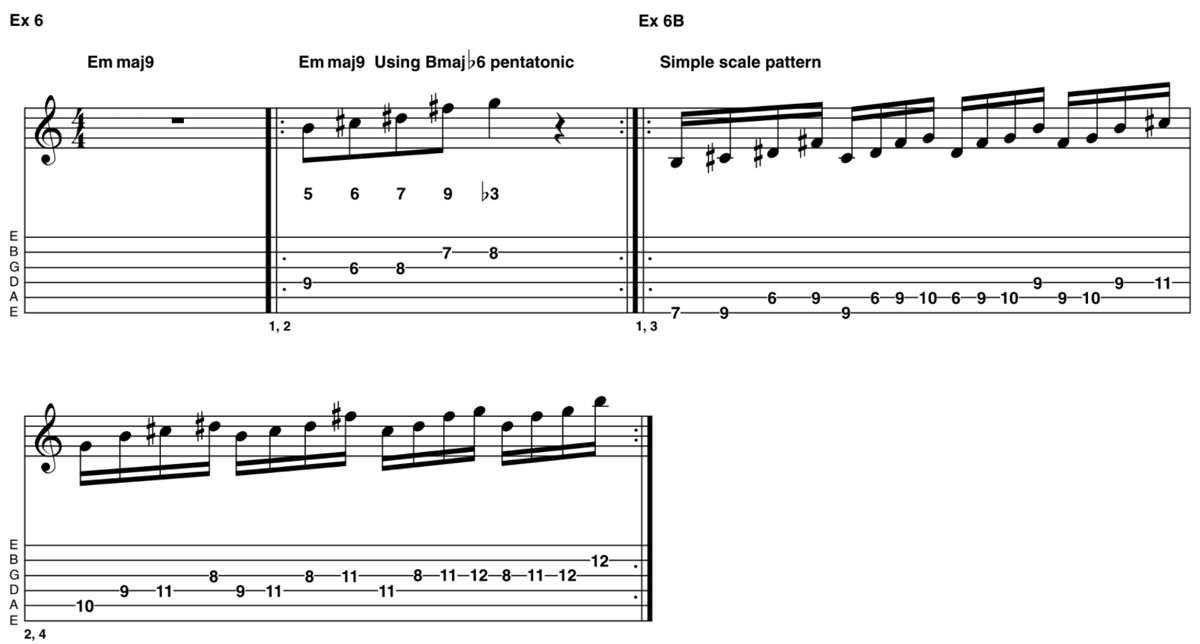
The intervals under the scale represent how they relate to the Emmaj9 chord. The line shows a scale exercise that might be familiar from your seven-note scale practice.
Example 007. Major flat 6 pentatonic 2

Here, we exploit the wide interval in the B major b6 Pentatonic (G-B). This line covers nearly three octaves and ends by adding the root (B) to the pentatonic.
Get The Pick Newsletter
All the latest guitar news, interviews, lessons, reviews, deals and more, direct to your inbox!
A professional guitarist for many years, Andy G Jones has played with Van Morrison, James Ingram, Lamont Dozier, Queen (Brian May and Roger Taylor), Robben Ford, Billy Cobham, John Illsley (Dire Straits), KT Tunstall, Albert Lee (featured on Andy's upcoming CD), Mike Finnigan, Dave Landreth and Ryan Voth from The Bros. Landreth, Malford Milligan, The BBC Radio Big Band, Patti Austin, Hamish Stuart (Average White Band), Lalo Schifrin (Hollywood film composer Bullitt, Mission Impossible), Hank Marvin, James Dean Bradfield (the Manic Street Preachers), Grady Tate, Agnetha from ABBA, Cliff Richard, Dudley Moore, Nathan James (Inglorious), Joey Tempest (Europe) and Kelsey Grammar.
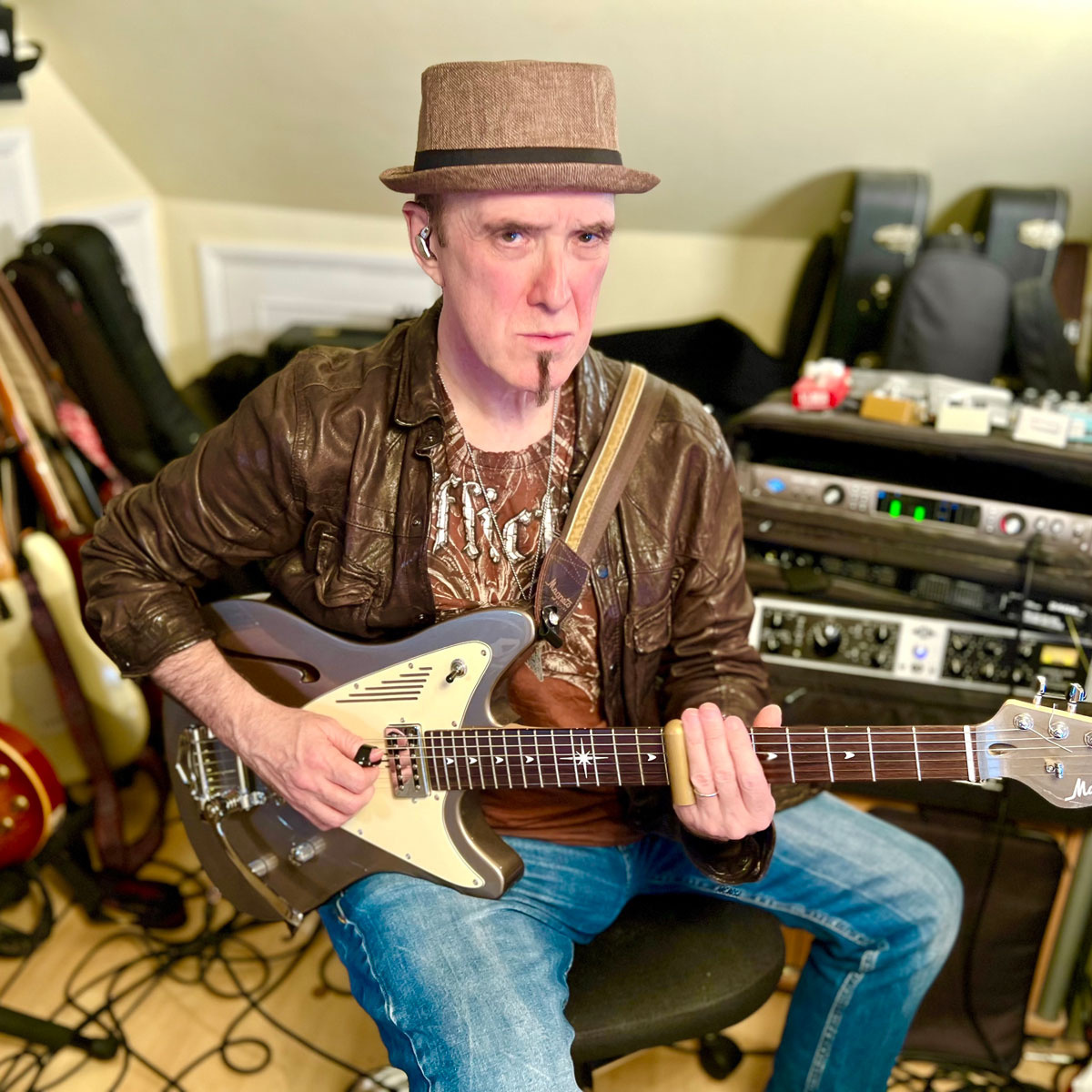







![Joe Bonamassa [left] wears a deep blue suit and polka-dotted shirt and plays his green refin Strat; the late Irish blues legend Rory Gallagher [right] screams and inflicts some punishment on his heavily worn number one Stratocaster.](https://cdn.mos.cms.futurecdn.net/cw28h7UBcTVfTLs7p7eiLe.jpg)


